Simple Filmmaking Techniques To Add Suspense with a Low Budget
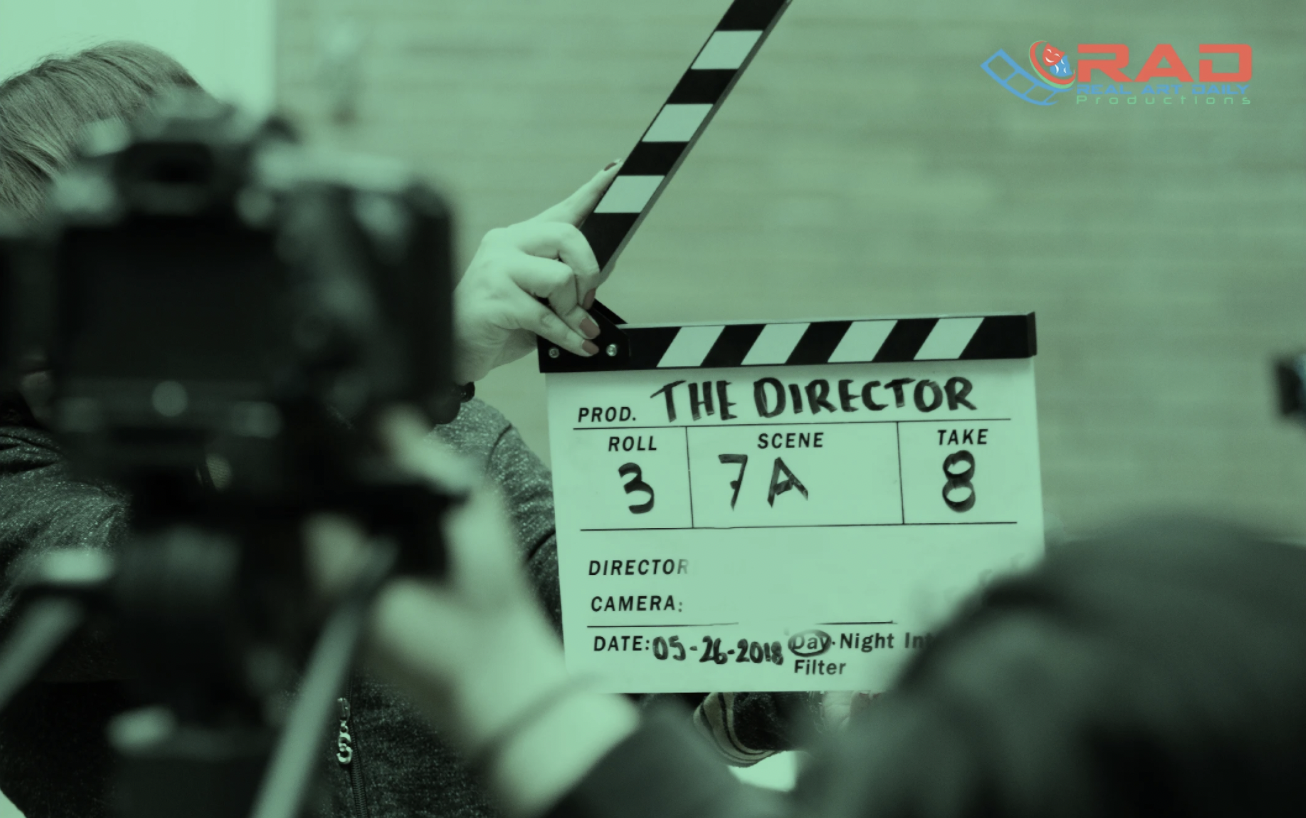
“Suspense is essentially an emotional process.” – Alfred Hitchcock
Thrillers are one of the oldest and most consistently popular film genres. From early shorts like The Lonedale Operator (1911) to classics like Notorious (1946) and recent entries like Parasite (2019), the successful thriller excels at creating suspense — meaning a state of uncertainty and anxiety over what is going to happen next.
Suspense isn’t exclusive to the thriller. Many types of films create suspense elements in order to secure and maintain their audience’s interest.
Even the jokes in comedies rely on the building and release of tension. Thus, it is critical for every budding filmmaker to learn basic suspense-building techniques and to become skilled at adding suspense with low-budget techniques.
There are many ways to add suspense elements in films. During the screenwriting phase you can strategically reveal information, address real life fears, and create realistic and relatable characters.
During production you can make use of off-screen space, low-key lighting and color theory. In post-production you can use color grading and rearrange shot order.
Filmmaking Techniques To Create Suspense
Reveal Plot information to buildup of emotion
The difference between surprise and suspense is that surprise is a sudden revelation based on a late reveal, whereas suspense relies on the buildup of emotion. One of the simplest ways to build tension is to give the audience information.
Alfred Hitchcock’s Rope (1948) opens with Brandon (John Dall) and Phillip (Farley Granger) killing David (Dick Hogan) and putting his body in an antique chest.
They discuss their plan to host a dinner party with David’s body in the room to prove that they have committed the perfect crime. Giving the audience this information creates suspense as we don’t know if or when their guests could stumble upon the corpse and uncover the murder.
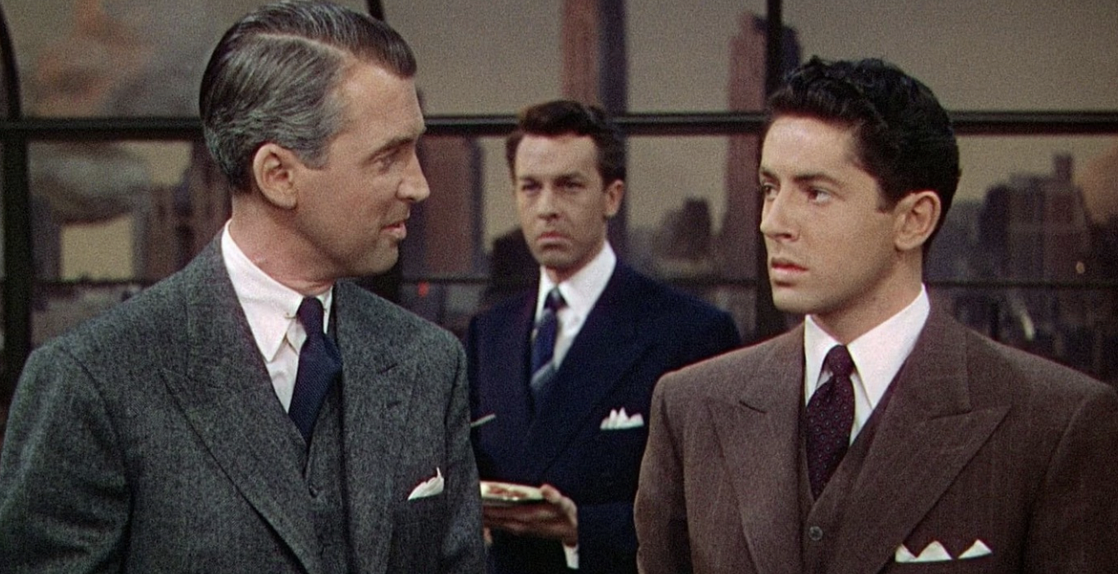
Addresses relevant fears or cultural anxieties of the audience
Either explicitly or metaphorically addressing real fears of your audience is a very popular way of building suspense. This can activate the audience’s anxiety response even if they don’t register the film as referencing their fears.
A more explicit example of this is Jordan Peele’s Get Out (2017). It’s about racism, but the kind of white liberal racism that does not generally get portrayed in film. It addresses racism in people who think they couldn’t possibly have a racist bone in their body because they voted for Obama and posted a black square on Instagram for BLM.
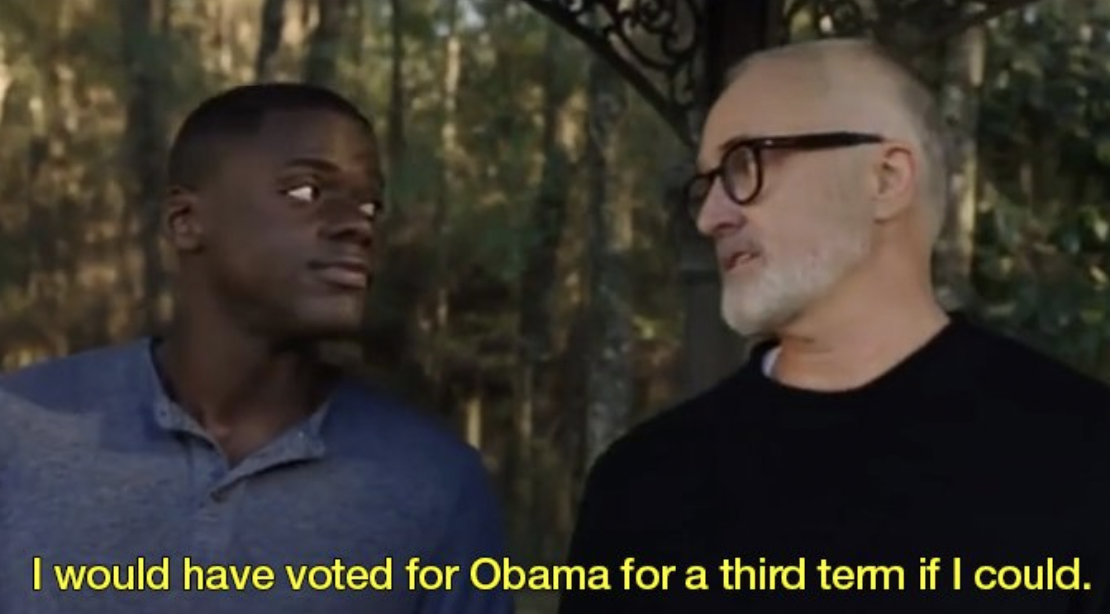
Get Out explicitly portrays how white liberal ignorance and well-intentioned microaggressions mask more insidious and violent ideologies.
As the layers get pulled back from the Armitage family’s true nature, suspense is created as the audience wonders how much further the rabbit hole goes and hopes that Chris (Daniel Kaluuya) can make it out alive.
A film that addresses audience anxieties subtextually is Steven Spielberg’s remake of War of the Worlds (2005). His version of the classic story explores anxieties of post-9/11 America.
Robbie (Justin Chatwin) impulsively tries to join the fight against the aliens before being mature enough to fully understand the consequences of his actions and he nearly gets himself killed. Robbie’s storyline parallels the many U.S. soldiers who enlisted right after the 9/11 attacks on a misguided impulse to “get back” at the enemy.
In one scene, Ray (Tom Cruise) finds himself covered in the ashes of people vaporized by the aliens. The invasion prompts both survival of the fittest individualism and the desire to work together to defeat the threat.
9/11 is never explicitly mentioned in the film, but the allusions to the attack and its aftermath still worked to tap into a visceral sense of fear for the audience, when 9/11 was still in the forefront of everyone’s minds. This can be done with any manner of topics, such as pregnancy and childbirth in Alien (1979) or communism in Invasion of the Body Snatchers (1956). This creates engagement and suspense on a more subconscious level and can be done with no additional cost since the work is done during the screenplay stage and doesn’t necessitate extra time spent on production or post-production.
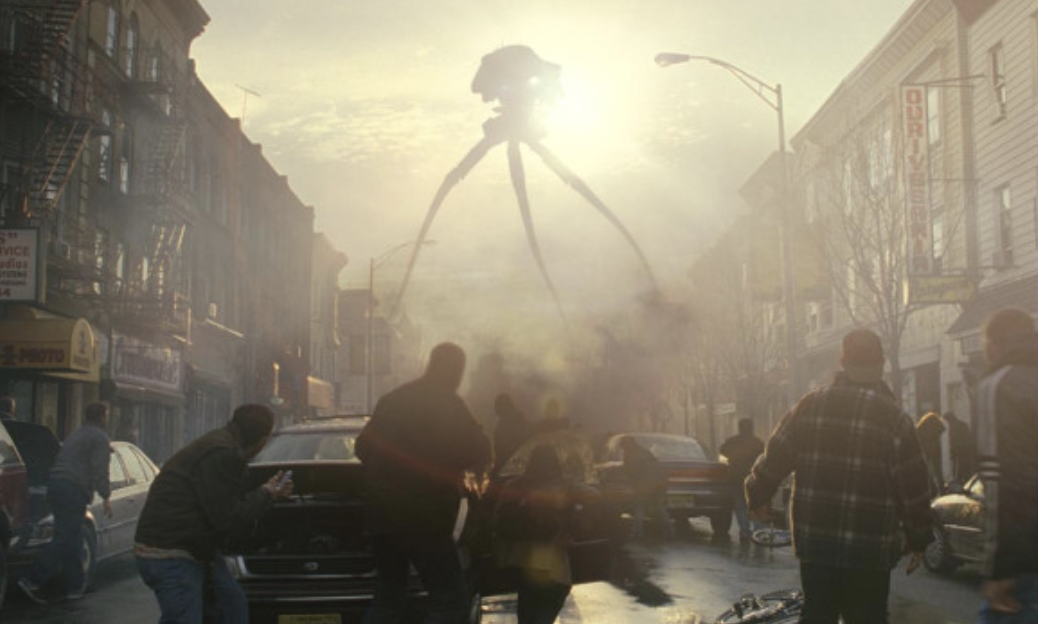
Create realistic and relatable characters
Like Hitchcock said, suspense is an emotional reaction to the content of a film. If you create characters that the audience is able to sympathize with, you can get them to vicariously experience the character’s fears and anxieties.
The entire plot of Rosemary’s Baby (1968) relies on the audience’s sympathy for Rosemary’s (Mia Farrow’s) plight. This means that a lot of time is spent fleshing out her character and her relationships to the people around her.
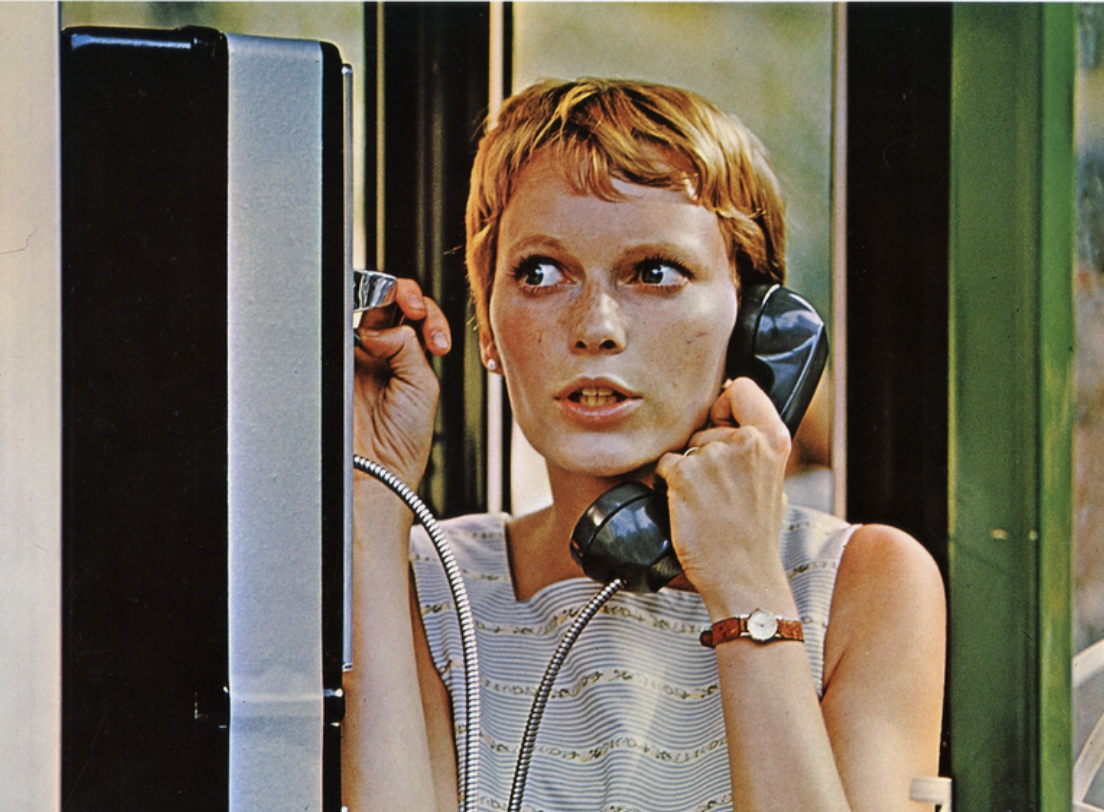
In Rosemary’s Baby, we see Guy (John Cassavettes) gaslight, manipulate, and sexually abuse Rosemary. As the tension of this emotional abuse builds, it is also compounded by the extraordinary physical pain caused by her pregnancy. The audience watches helplessly as the few people who try to help her, mysteriously die or accidentally hand her right back to her abusers. This creates anxiety for the audience as Rosemary’s well-being deteriorates, securing and maintaining interest in how the story will play out.
Use off-screen space
Off-screen space is space that is part of the scene but doesn’t appear on-screen. The way that the characters are framed and their emotions are portrayed, acts as a mediator between the thing happening off-screen and the audience viewing the film. The reaction of the characters informs the audience of how to react to what they aren’t able to see on screen. The action can remain completely hidden or have parts of it bleed over into the on-screen space.
In the beach attack scene from Jaws (1975), the shark is kept completely hidden from view. All that is shown is Alex being pulled underwater and his blood coloring part of the ocean red. Demonstrating the danger element that drives the rest of the story without revealing it entirely creates suspense and excitement for the film’s gradual reveal of its monster.
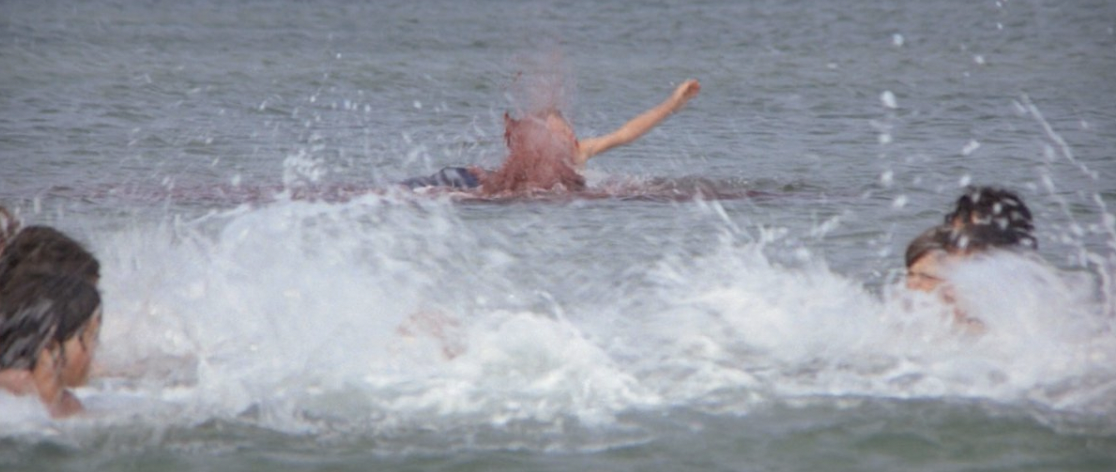
Low-key lighting to heighten the drama of the scene
Low-key lighting refers to high contrast lighting, with stark differences between dark and light areas of the frame. This lighting technique is strongly associated with film noir in addition to other kinds of dramas, thrillers, and horror films.
It instantly heightens the drama of the scene by adding intense contrast to the visuals. It can also be used to keep certain elements of the scene hidden in shadow or to isolate the subject in a seemingly endless void of darkness.
Low-key lighting can transform ordinary or even beautiful environments into creepy, off-putting spaces. In the opening of Mildred Pierce (1945), intense contrast, angular shadows, and flickering candlelight turn her California mansion into something out of a Halloween haunted house.
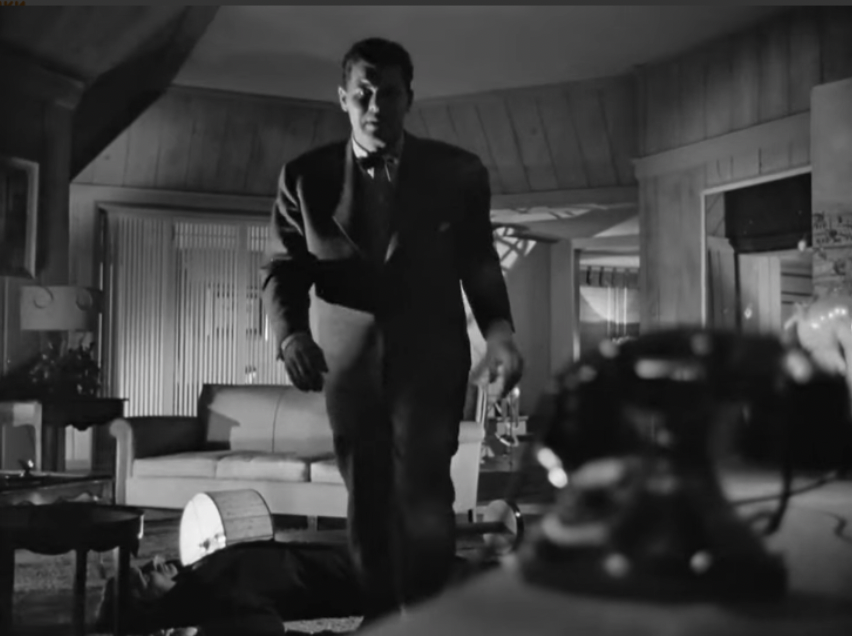
Use color grading to build excitement
This process is explained more in-depth in the color grading vs color correction article, but it essentially refers to stylizing the color of the image in post-production. Color grading can be used to alter contrast, color, saturation, detail, and black levels.
Like with low-key lighting, increasing the contrast and/or saturation of the image can help to build suspense and excitement. Mad Max: Fury Road (2015) is a well-known example of a film that uses extremely high contrast and saturation to show the brutality and endlessness of its desert setting.

This process can also be used to tint the image a certain color. The green overtones in The Matrix (1999) create an unsettling atmosphere because it’s an unnatural color for ambient lighting. Going back to basic color theory, red symbolizes aggression and anger; blue represents detachment and loneliness; and purple communicates ambiguity. More typically cheerful colors like pink and yellow can also be used ironically as a contrast to the suspenseful things happening in the narrative.
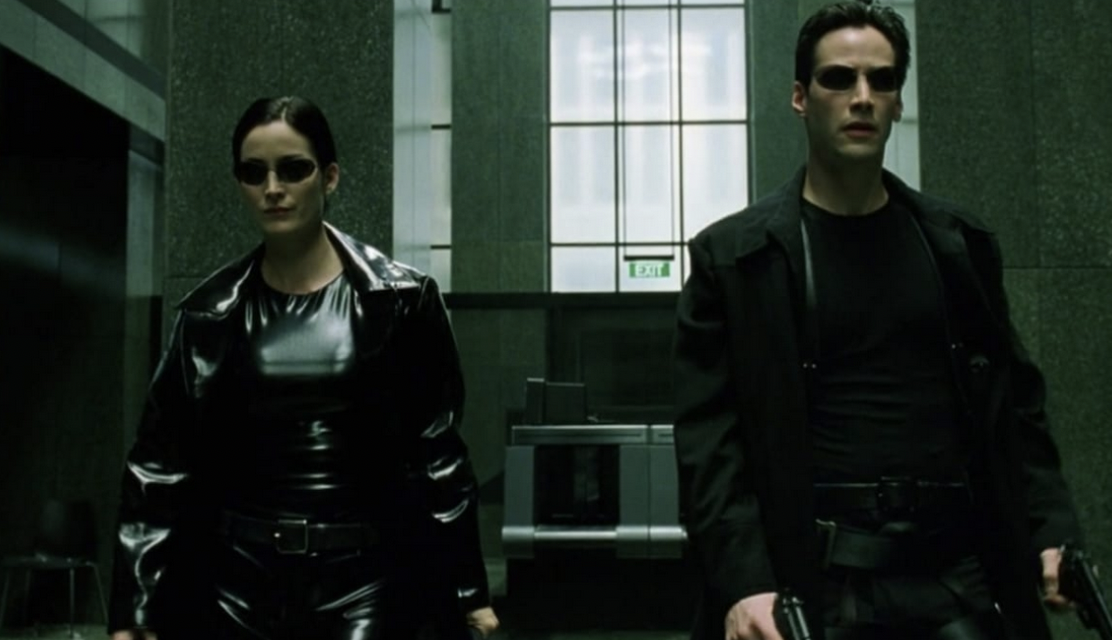
Sequence of shot order in post-production
The order of shots in a sequence is an incredibly important part of suspense editing, as is demonstrated by how the dinosaurs are revealed in Jurassic Park (1993). Before a single dinosaur appears on-screen, the camera shows the expressions of Alan (Sam Neill) and Ellie (Laura Dern) as they see their first dinosaur.
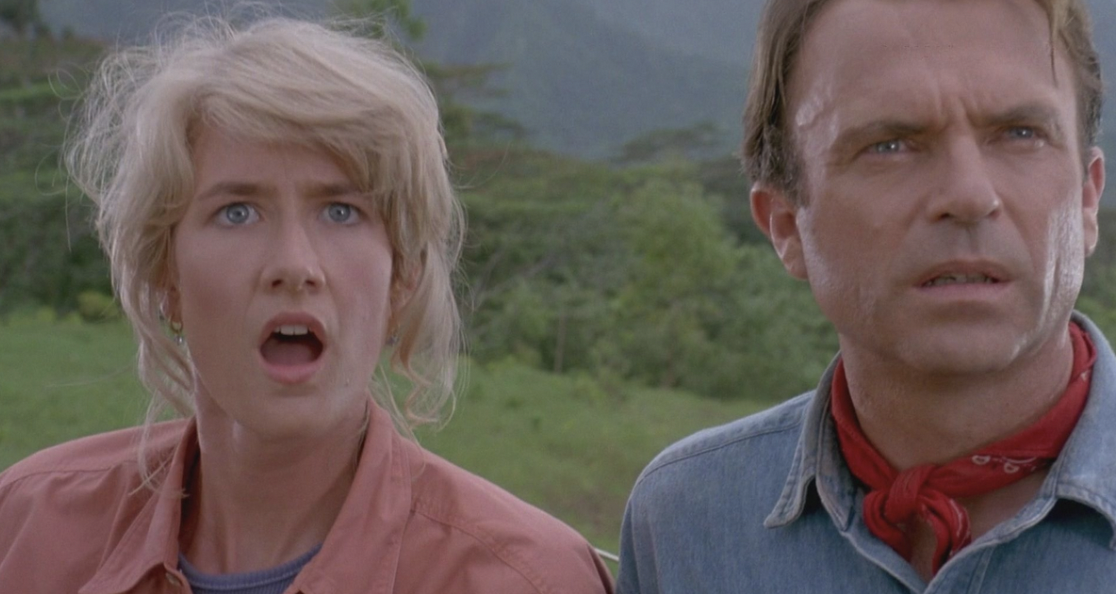
Keeping the audience in the dark about what the character is reacting to creates a short build and release of tension. In this case it also creates a direct link between how the characters feel about seeing the dinosaurs for the first time and how the audience reacts to it. This helps forge an emotional connection between the viewer and the characters which increases the effectiveness of later sequences like the T-Rex and velociraptor attacks. When the audience grows attached to the characters it becomes easier for the filmmaker to make the audience fear for their safety.
Last few talks about creating suspense in low budget film
There are many different ways to build tension in your film, and you don’t need to break the bank to keep your audience on the edge of their seat. Adding suspense with a low-budget is both possible and practical.
Real Art Daily (RAD) Productions can be part of that creation. RADProd’s post-production service team is here to help you with many of the processes discussed here, including but not limited to color grading and video editing.
